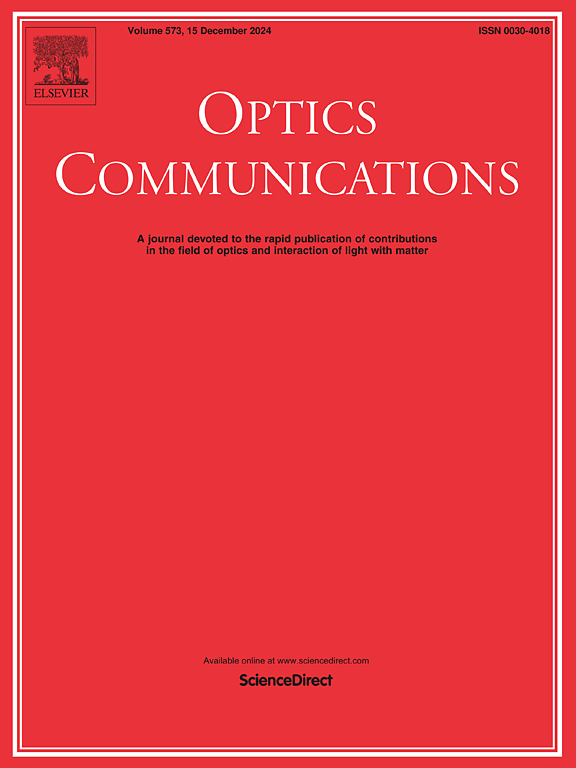简单合成具有宽可调发射波长的 AgInS2/ZnS 核/壳量子点,用于白光发光二极管
IF 2.2
3区 物理与天体物理
Q2 OPTICS
引用次数: 0
摘要
照明应用需要高效、宽范围发射的荧光粉。I-III-VI 族量子点(QDs)具有成分无毒、光谱可调范围大等优点,在照明领域具有潜在的应用前景。然而,这些 QDs 在较短波长下的高效发光性能仍有待进一步研究,这对于开发高显色指数白光 LED 器件(WLED)至关重要。在这项工作中,通过改变 AgInS2 的 Ag/In 比率和 Zn2+ 与 AgInS2 阳离子的相互扩散,获得了具有宽波段和高发光效率的宽可见光范围发光 AgInS2/ZnS QDs。所获得的核壳结构 AgInS2/ZnS 的光致发光(PL)波长范围从 703 nm 扩展到 524 nm,具有较高的 PL 量子产率(QY)和稳定性。基于优化的 AgInS2/ZnS QDs 的冠军器件具有暖白光(相关色温 = 3652 K)特性,显色指数(CRI Ra)高达 92.85,同时在不同的驱动电流下都能保持出色的色彩稳定性。这些特性远远优于使用 YAG 荧光粉的 WLED。本文章由计算机程序翻译,如有差异,请以英文原文为准。
Simple synthesis of AgInS2/ZnS core/shell quantum dots with wide tunable emission wavelength for white light-emitting diodes
Phosphor with efficient and broad range emission is necessary for lighting applications. I-III-VI group quantum dots (QDs) have the advantages of non-toxic composition and large adjustable spectrum range, and have potential applications in the field of lighting. However, the efficient luminescence of these QDs at shorter wavelengths still needs further study, which is crucial for the development of high color rendering index white light LED devices (WLEDs). In this work, wide visible range emitting AgInS2/ZnS QDs with broad band and high luminous efficiency were obtained by altering the Ag/In ratios and Zn2+ inter-diffusion with cation of AgInS2. Photo-luminescent (PL) wavelength range of the obtained core-shell structured AgInS2/ZnS extended from 703 nm to 524 nm with high PL quantum yield (QY) and stability. The champion device based on the optimized AgInS2/ZnS QDs exhibits warm white light (correlated color temperature = 3652 K) characteristics with high color rendering index (CRI Ra) of 92.85 while maintaining excellent color stability under different driving currents. These properties are far superior to those of WLEDs with YAG phosphor.
求助全文
通过发布文献求助,成功后即可免费获取论文全文。
去求助
来源期刊

Optics Communications
物理-光学
CiteScore
5.10
自引率
8.30%
发文量
681
审稿时长
38 days
期刊介绍:
Optics Communications invites original and timely contributions containing new results in various fields of optics and photonics. The journal considers theoretical and experimental research in areas ranging from the fundamental properties of light to technological applications. Topics covered include classical and quantum optics, optical physics and light-matter interactions, lasers, imaging, guided-wave optics and optical information processing. Manuscripts should offer clear evidence of novelty and significance. Papers concentrating on mathematical and computational issues, with limited connection to optics, are not suitable for publication in the Journal. Similarly, small technical advances, or papers concerned only with engineering applications or issues of materials science fall outside the journal scope.
 求助内容:
求助内容: 应助结果提醒方式:
应助结果提醒方式:


